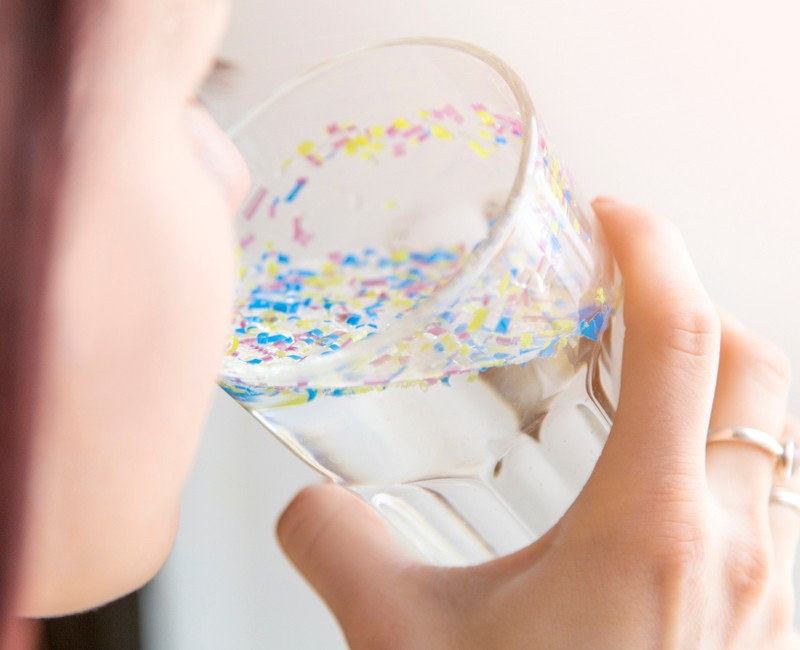How Many Microplastics Do We Consume?

How Many Microplastics Do We Consume?
The rise of microplastics is one of the most concerning environmental challenges of recent times, and it seems to be getting worse. How much plastic we produce is growing faster each year than ever before, and the scale of these tiny plastic particles entering our environment, our oceans, and even our food is only just beginning to be understood. For that reason, it can be difficult to answer the question: how many microplastics do we consume?
Microplastics are tiny bits of plastic debris that are causing increasing damage to our environment and our bodies. The definition includes any pieces of plastic under 5mm in length, but in fact, many of these pieces are much smaller and can even be microscopic. For this reason, it is very difficult to measure exactly how much microplastic is already polluting our environment, although The Plastic Soup Foundation estimates there are between 5 and 13 million tons of plastic in our oceans in total, a large percentage of which is microplastic.
Another reason why it is hard to estimate how much plastic we consume is that there are so many different ways we might ingest it. It gets into our food and our drinking water from plastic bottles and packaging, and we can even breathe it in. According to research by scientists at the University of Vienna, the average person consumes as much as 5 grams of plastic per person, per week, which is the equivalent of a credit card. Another recent study estimated humans consume 39,000 to 52,000 microplastic particles a year through food and drink, and 74,000 to 210,000 when including estimates for how much is inhaled.
Another estimate suggests that this amounts to 20kg of plastic over the course of the average person’s lifetime, which could have a clear negative impact on human health. More research will be needed to determine the exact amount of plastic the average person eats, but it is clear from existing scientific knowledge that the problem is a large one.
Where do microplastics come from?
The reason that microplastics seem to have become such a big problem so quickly is that they come from many different places; they can be produced intentionally for applications such as cosmetic products, and they can also be created when a large piece of plastic breaks down.
Microplastics are such a challenging problem to tackle because we rely so much on plastic in our daily lives. The production of plastic has accelerated dramatically since the 1950s. 368 million tons of plastic were produced in 2019 alone, and at the current rate of growth, it is expected that we will produce over 600 million tons per year by 2025.
Many countries have banned microplastics in cosmetics, which could help to alleviate the problem, but the overall scale of plastic pollution is such that much more needs to be done. Animals such as turtles, camels and fish have died from eating plastic that entered our water systems, and scientists expect that there could be serious unforeseen consequences for human health due to the increasing volume of microplastics we consume.
How do we consume so much plastic?
Plastic is everywhere in our daily lives, and because it is not disposed of correctly, it can end up in our food and water. When larger plastic pieces are sent to landfills or incorrectly disposed of in rivers or oceans, they can also break down into microscopic plastic pollution. One of the most common sources of this plastic debris is packaging, because single use plastic packaging almost always requires the consumer to cut or twist or tear open the plastic in order to access the goods inside. In all of these actions, tiny plastic pieces can break off, and either stick to the product inside the packaging – which, if it is food, means that you are likely to consume this plastic – or catch on your clothes, in which case it might enter the water system when you do your laundry.
Plastic water bottles are a common source of microplastics, with some estimates suggesting this type of plastic packaging contains over 100 pieces of microplastic per litre. It is difficult to estimate exactly how much of this plastic enters your system when you drink from a bottle of water, but it’s important to remember that this is only one source of microplastic in the water that we drink. Once plastics enter the water system, they can be found in your tap water and even in the natural environment.
If these plastic particles are small enough you might also breathe them in. Ingested particles have been found in the internal organs of animals, and scientists expect there could be serious health risks associated with this because of the number of tiny bits of plastic people consume. While little is known about the specific health risks of humans eating, drinking and breathing in plastic particles, new research is already underway that will hopefully draw more attention to the scale of this problem and force people to act, to protect ourselves and all living things.
To learn more about how we can fight for a cleaner environment and to combat the challenges that come with ingesting microplastics, visit visit Lanes’ Microplastics Out of Our Drains (MOOD) campaign hub.







